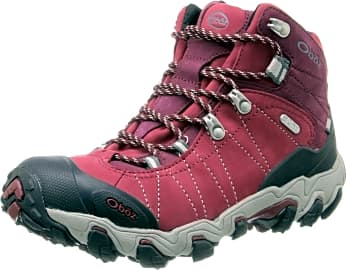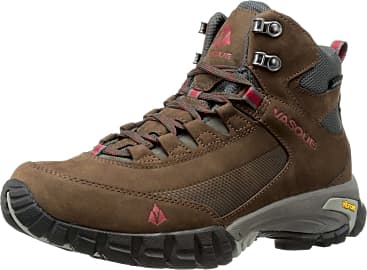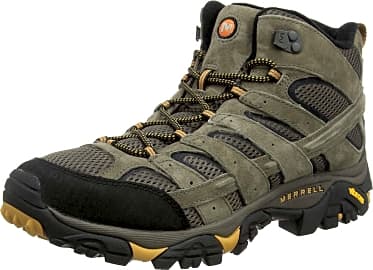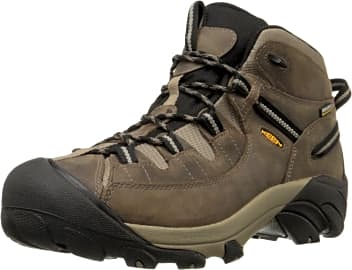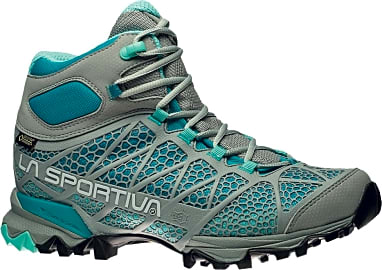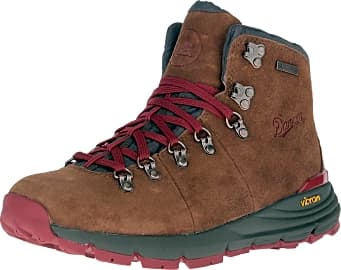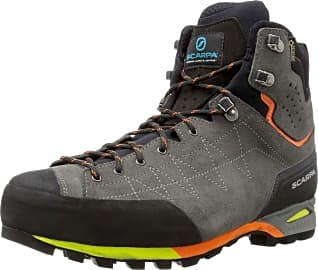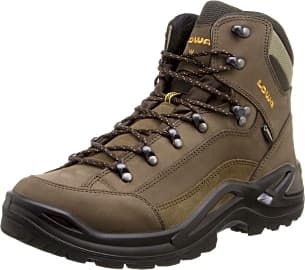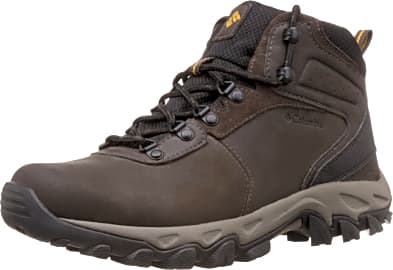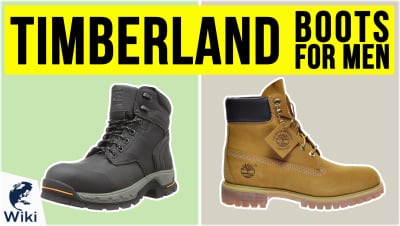The 10 Best Hiking Boots

This wiki has been updated 42 times since it was first published in May of 2015. There's nothing worse than having to put up with aching, blistered, or soggy feet while on an extended trek through the wilderness. That's why it's important to invest in a quality pair of hiking boots for your next adventure. Our list includes options for a range of activities, from multi-day backpacking expeditions to casual day hikes at the local state park. When users buy our independently chosen editorial recommendations, we may earn commissions to help fund the Wiki.
Editor's Notes
April 19, 2019:
Updated just in time for the spring outdoor season, our list of best hiking boots now encompasses a wider variety of models suitable for a equally wide range of activities. Advanced options like the Scarpa Zodiac Plus and La Sportiva Core High, for example, are equipped with the latest in footwear technology to minimize weight and maximize performance over long-haul treks and high-altitude climbs. More casual models like the Danner Mountain 600 and Vasque Talus Trek, on the other hand, offer the flexibility, affordability, and, in the latter case, vintage style to keep you satisfied during day hikes or even adventures around town. Finally, options like the Salomon Quest 4D 3 and Oboz Bridger B-Dry provide the durability and all-around support to keep you comfortable no matter where you're going.
What To Look For In Hiking Boots
Some hiking boots are specifically designed to handle mud and snow.
Hiking boots offer the body the additional support necessary to enjoy the rugged outdoors in the most comfortable way possible. In general, hiking boots provide much more stability than other shoes. This makes it less likely that a hiker will roll their ankle when encountering large gravel, uneven surfaces, and difficult terrain.
Depending on the type of weather the hiker will be predominantly trekking through, hiking boots are made to either be highly water resistant or very breathable. If you will be hiking through snow-tipped peaks and across streams regularly, it is better to opt for water resistant hiking boots. Those that travel mainly in hot, dry climates will want the shoe to breathe. Unreleased moisture is the perfect breeding ground for fungal infections. When moisture is combined with constant friction it can create blisters and sores as well.
The soles of hiking boots are very important factors to look out for, as needs will vary based on the type of terrain. There is the option to simply choose hiking boots which offer all-terrain support, or to select a boot based on the terrain most hiked. Some hiking boots are specifically designed to handle mud and snow. These boots have deep treads that wick solids toward the outside of the boot. Others are designed to help the hiker gain traction on uneven or gravelly terrain. Still other hiking boots are made to disperse weight evenly, and are most beneficial on sandy or snowy terrain. The most important elements of a hiking sole are that it is non-skidding, provides ample traction, and disperses its grip evenly throughout your step.
Another aspect to consider is the boot's midsole. The midsole provides cushioning to the heel and joints, buffers the feet from shock, and keeps the shock on the knees to a minimum. The midsole may not affect running related injuries on flat surfaces, but a comfortable midsole is extremely important on a long trek over shifting terrain. The stronger the midsole, the more stiff the boot will feel. This prevents the foot from wrapping itself around every uneven surface stepped upon.
Putting Hiking Boots To Good Use
Walking around the house breaking in a new pair of hiking boots is a great way to get the feet used to them. After a short time, however, it becomes imperative to take those hiking boots to the nearest trail for a trial run. There are many health benefits of hitting the trail in a new pair of hiking boots as well. Regularly participating in aerobic sports like hiking reduces the risk of cardiovascular disease. The heart is a muscle just like any other. Aerobic sports like hiking strengthen that muscle which reduces the chance of injury or disease.
At the end of a training program, researchers noted a clinically significant reduction in patients' depression scores.
Aerobic exercises have also been studied for their effects on the brain. Exercise benefits the brain by improving memory and cognitive ability. Exercises such as hiking also reduce inflammation in the brain and release growth factors. Growth factors are chemicals in the brain that affect the health of the brain cells, the growth of new blood vessels, and the survival rate of existing cells.
There is even evidence that exercise may be a novel treatment for depression. Several reports have indicated that physical activity can reduce the severity of symptoms in depressed patients. In order to test these indications, a team of researchers studied the effects of exercise on people who considered themselves depressed. At the end of a training program, researchers noted a clinically significant reduction in patients' depression scores. The study concluded that aerobic exercises can produce substantial improvements in mood in a short time.
The Benefits Of Hiking In A Forest
While any long distance walk is considered a hike, the word itself usually brings to mind a trail winding through a forest. There may be a reason for this association as well. It appears that walks through the forest, or forest baths, have some amazing benefits to the human body. In Japan, the term shirin-yoku is used to describe the experience. Shirin-yoku best translates to imbibing the forest atmosphere. Regular exposure to the forest atmosphere boosts cognitive performance, mood, and immune function while reducing stress levels and cholesterol.
Shirin-yoku best translates to imbibing the forest atmosphere.
This may also be associated with the color green. A recent study aimed to see if the act of being among different colored trees had an effect on the brain. Participants exercised while looking at digital footage of various colored forests. Researchers found that participants who saw green forests had less mood disturbances and rated themselves as less tired than those who saw red forests. Participants who saw only red forests were more likely to rate themselves as angry when compared with any other group.
Regularly hiking in a forest also immerses the lungs in powerful compounds called phytonicides. In nature, phytonicides are the beneficial compounds in plants which protect them from environmental intruders. In humans, phytonicides enhance and empower the body in many ways. Regular phytonicide exposure has been linked to reduced stress and anxiety, lower signs of inflammation and pain, and improved mood and immune system function.


